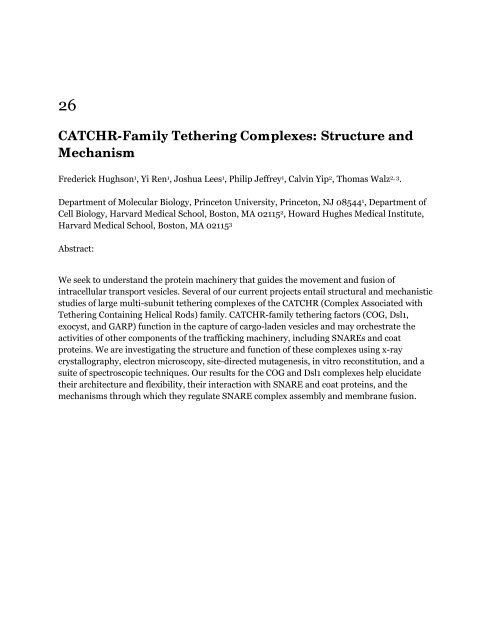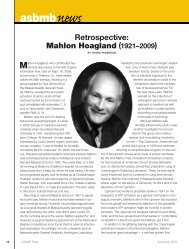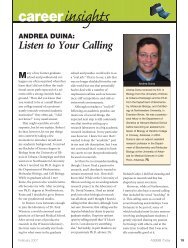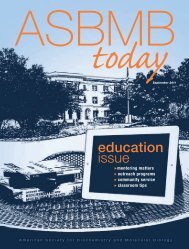View Program - asbmb
View Program - asbmb
View Program - asbmb
- TAGS
- program
- asbmb
- www.asbmb.org
Create successful ePaper yourself
Turn your PDF publications into a flip-book with our unique Google optimized e-Paper software.
26<br />
CATCHR-Family Tethering Complexes: Structure and<br />
Mechanism<br />
Frederick Hughson 1 , Yi Ren 1 , Joshua Lees 1 , Philip Jeffrey 1 , Calvin Yip 2 , Thomas Walz 2, 3 .<br />
Department of Molecular Biology, Princeton University, Princeton, NJ 08544 1 , Department of<br />
Cell Biology, Harvard Medical School, Boston, MA 02115 2 , Howard Hughes Medical Institute,<br />
Harvard Medical School, Boston, MA 02115 3<br />
Abstract:<br />
We seek to understand the protein machinery that guides the movement and fusion of<br />
intracellular transport vesicles. Several of our current projects entail structural and mechanistic<br />
studies of large multi-subunit tethering complexes of the CATCHR (Complex Associated with<br />
Tethering Containing Helical Rods) family. CATCHR-family tethering factors (COG, Dsl1,<br />
exocyst, and GARP) function in the capture of cargo-laden vesicles and may orchestrate the<br />
activities of other components of the trafficking machinery, including SNAREs and coat<br />
proteins. We are investigating the structure and function of these complexes using x-ray<br />
crystallography, electron microscopy, site-directed mutagenesis, in vitro reconstitution, and a<br />
suite of spectroscopic techniques. Our results for the COG and Dsl1 complexes help elucidate<br />
their architecture and flexibility, their interaction with SNARE and coat proteins, and the<br />
mechanisms through which they regulate SNARE complex assembly and membrane fusion.






